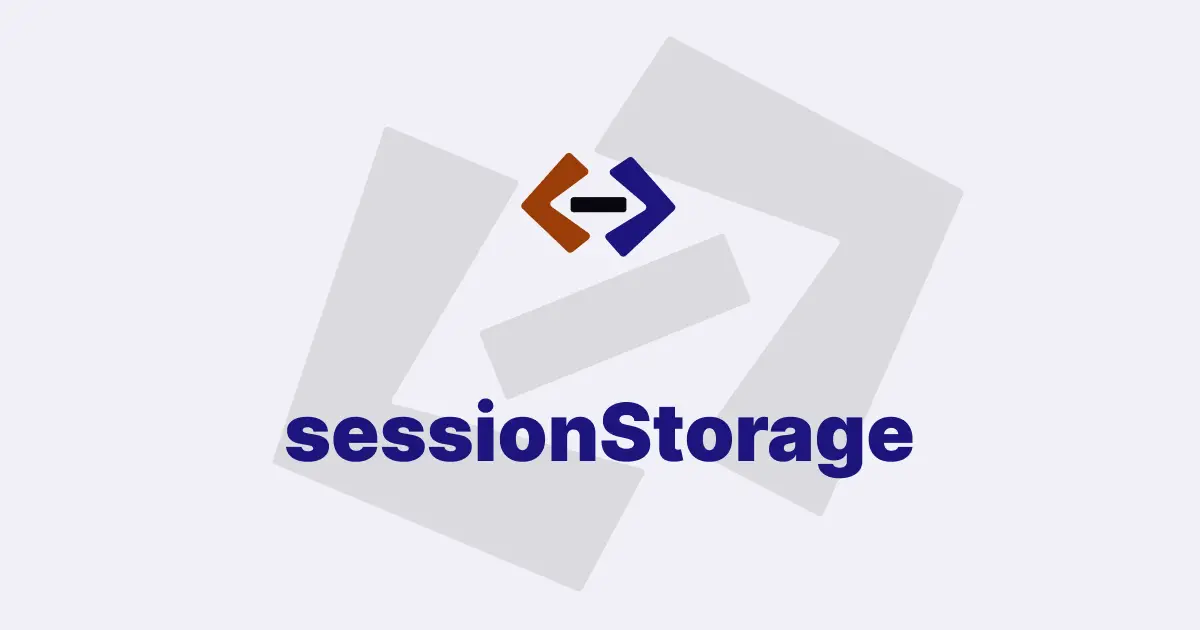The localStorage object is a way to store key-value pairs of data in a web browser.
It’s similar to the sessionStorage object, but with one important difference: data stored in localStorage persists even after the browser is closed and reopened, whereas data stored in sessionStorage is only available during the current browsing session.
The localStorage object can be a powerful tool for web developers when it comes to storing user preferences, cached data, and other such data that needs to persist across different browsing sessions.
Creating a localStorage Object:
To create a localStorage object, we can simply use the localStorage property, which is part of the window object.
For example:
var localData = localStorage;This creates a variable called localData that holds a reference to the localStorage object.
Setting a localStorage Item:
Once we have a localStorage object, we can set an item by using the setItem() method. This method takes two arguments: a key and a value.
The key is a string that identifies the data we want to store, and the value is the actual data we want to store.
For example:
localData.setItem("username", "johndoe");This sets a localStorage item called "username" with a value of "johndoe". We can set as many items as we need by calling the setItem() method multiple times with different keys and values.
Getting a localStorage Item:
To retrieve the value of a localStorage item, we can use the getItem() method. This method takes a single argument, which is the key of the data we want to retrieve.
For example:
var username = localData.getItem("username");This retrieves the value of the "username" localStorage item and stores it in a variable called "username". We can then use this variable to do whatever we need to do with the data.
Removing a localStorage Item:
If we no longer need a localStorage item, we can remove it using the removeItem() method. This method takes a single argument, which is the key of the data we want to remove.
For example:
localData.removeItem("username");This removes the "username" localStorage item from the localStorage object.
Using localStorage with Objects and Arrays:
localStorage can also be used to store objects and arrays. However, we need to use JSON.stringify() to convert the object or array to a string before storing it, and JSON.parse() to convert it back to an object or array after retrieving it.
For example:
// Set an object as a localStorage item
var user = {
name: "John Doe",
age: 30,
email: "johndoe@example.com",
};
localData.setItem("user", JSON.stringify(user));
// Retrieve the object from localStorage and convert it back to an object
var storedUser = JSON.parse(localData.getItem("user"));
console.log(storedUser); // Output: { name: "John Doe", age: 30, email: "johndoe@example.com" }Limitations of localStorage
It’s important to note that localStorage has some limitations. First, localStorage is specific to a particular domain and protocol. Data stored on one domain cannot be accessed by another domain, and data stored with HTTP cannot be accessed with HTTPS and vice versa.
Also, localStorage has a maximum storage limit of 5-10MB depending on the browser. Attempting to store more data than this limit will result in an "QuotaExceededError" error.
Finally, it’s important to keep in mind that while localStorage is more persistent than sessionStorage, it’s still not a secure way to store sensitive information, as it can be accessed by anyone who has access to the user’s computer.
Best Practices for Using localStorage
Here are some best practices for using localStorage in JavaScript:
-
Store only the data that you need. Since localStorage has a limited storage capacity, it’s important to only store the data that’s necessary for your application to function.
-
Don’t store sensitive data. As mentioned earlier, localStorage is not a secure way to store sensitive data such as passwords or credit card numbers.
-
Check for localStorage availability. Some browsers don’t support localStorage, so it’s a good idea to check for its availability before using it. For example:
if (typeof Storage !== "undefined") { // localStorage is available } else { // localStorage is not available } -
Use
JSON.stringify()andJSON.parse()to store and retrieve objects and arrays. This will ensure that the data is stored and retrieved correctly. -
Always use try-catch blocks when using localStorage. This will help you handle any errors that may occur while using localStorage.
Here’s an example of how to use localStorage with try-catch blocks:
try {
// Try to set a localStorage item
localData.setItem("username", "johndoe");
} catch (e) {
// Handle the error if it occurs
if (e == QUOTA_EXCEEDED_ERR) {
console.log("Error: Local Storage limit exceeded.");
} else {
console.log("Error: Could not access Local Storage.");
}
}In conclusion, localStorage is a powerful tool for storing data in a web browser. With localStorage, we can store data that persists even after the browser is closed and reopened.
However, it’s important to keep in mind the limitations of localStorage, and to use it responsibly and securely.
Thank you for reading, and let’s have conversation with each other
Thank you for reading my article. Let’s have conversation on Twitter and LinkedIn by connecting.
